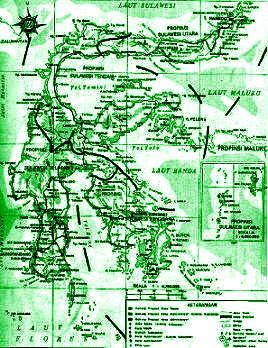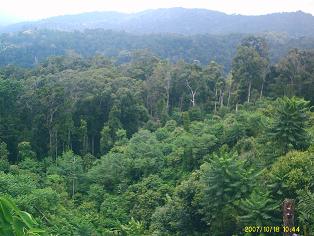
 |
|
|
|---|
| Sulawesi is the most spectacular center of endemicity for plants and animals in Indonesia. Its high mountainous terrain has protected much of its fauna and flora, although almost nothing remains of its lowland forests. It has the most extensive system of lakes in Indonesia as well as the largest forests on ultrabasic substrates in the world. It is one of the foremost two or three places globally as a center for marine biodiversity. While Sulawesi has on paper extensive protected areas, some additions are required, and planning is needed to integrate these protected areas into a system that conserves representative landscapes and their functions. |
 |
|---|
Conservation of biological values in Lore Lindu National Park, which is a landscape scale park, through community participation in park management, is the top terrestrial priority. Other terrestrial protected areas in Sulawesi are extremely important for conserving important plants and animals, but none other is as geographically important or has the same variety of topography and diversity of habitats. There is urgency in all Sulawesi terrestrial protected areas to avert and ameliorate threats to these parks caused by encroachment, hunting and illegal logging. Lore Lindu National Park is facing all these threats and there is a steady attrition of its biological values and the value of its ecosystem services to the large community in Palu and its surrounds.
Conservation of the biota of Sangihe and Talaud islands is also a high priority. These islands have a unique endemic community of animals and plants. Freshwater lakes have been severely degraded and their biota despoiled in Sulawesi.
The Malali Lake system may be one of the few remaining Sulawesi freshwater systems that can be conserved. There is a priority to survey this system and evaluate its biological importance.
South Sulawesi is poorly served by protected areas, despite the fact that its biota is amongst the most degraded and threatened in Sulawesi.
An initial study to determine priorities for biodiversity action in the Maros-Pangkajene area in South Sulawesi (Allard et al. 2000) should be progressed as a priority. |
|---|
Source : Report on Biodiversity and Tropical Forests in Indonesia, USAID/Indonesia, 2004. Prepared by : (1) Steve Rhee, M.E.Sc. (2) Darrell Kitchener, Ph.D. (3) Tim Brown, Ph.D. (4) Reed Merrill, M.Sc. (5) Russ Dilts, Ph.D. (6) Stacey Tighe, Ph.D. |
 |
 |
|---|
|
||||||||||||||||||||||||||||
|---|---|---|---|---|---|---|---|---|---|---|---|---|---|---|---|---|---|---|---|---|---|---|---|---|---|---|---|---|
|
|
||||||||||||||||||||||||||||